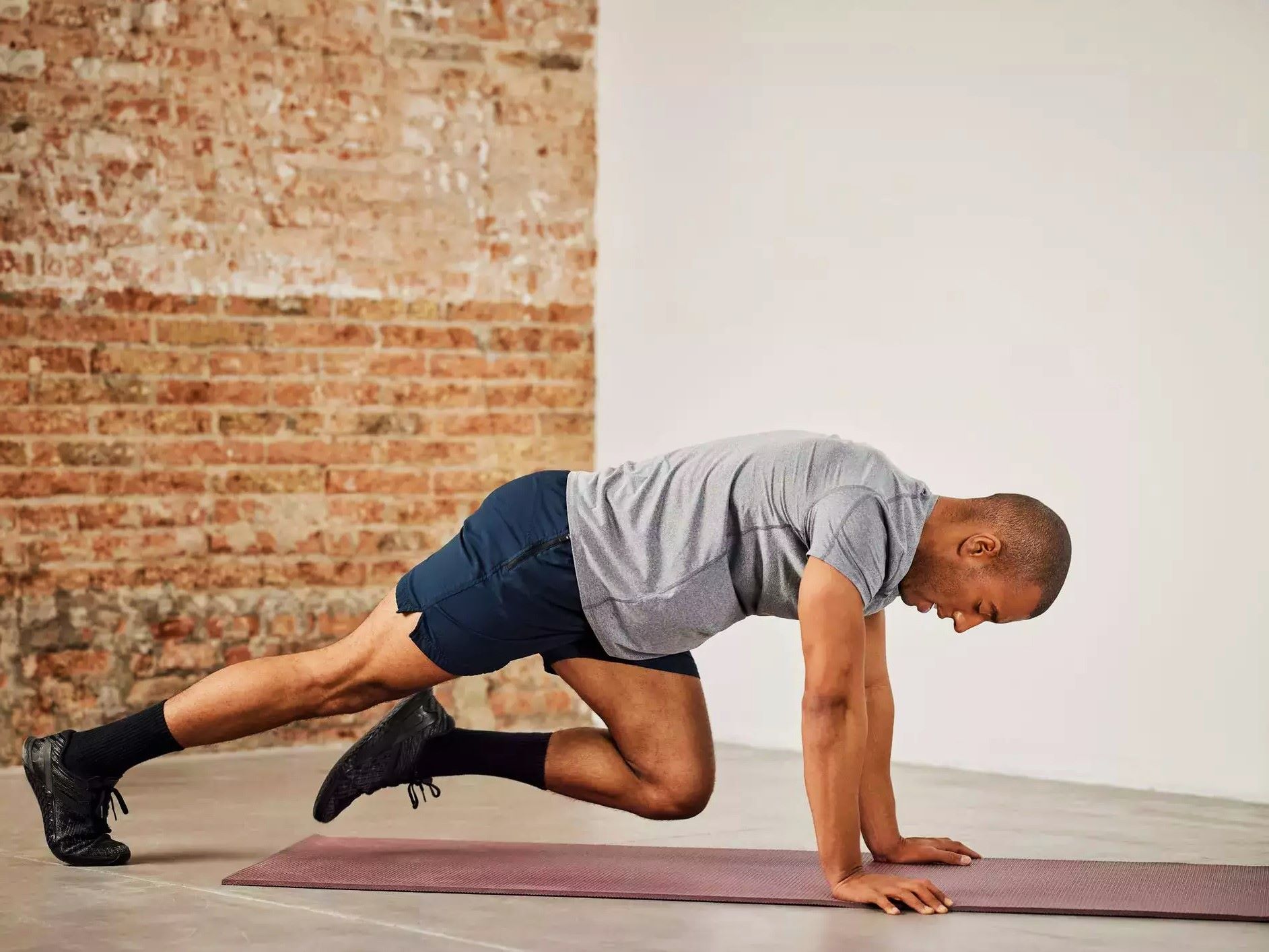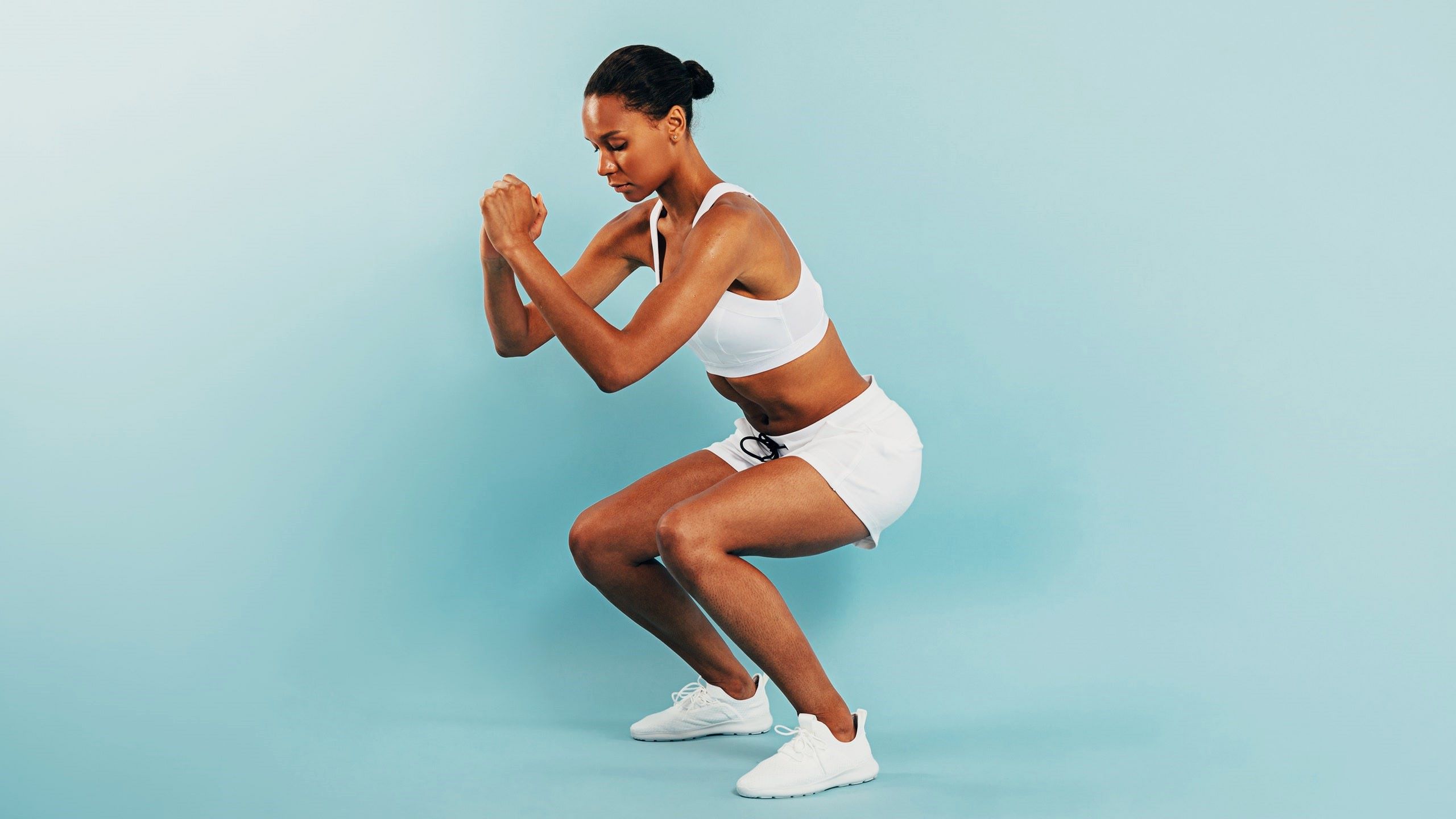Home>Training & Techniques>Mastering The Technique Of Mountain Climbers


Training & Techniques
Mastering The Technique Of Mountain Climbers
Published: March 3, 2024
Learn the best training and techniques for mastering mountain climbers. Elevate your skills with expert tips and guidance in this comprehensive guide.
(Many of the links in this article redirect to a specific reviewed product. Your purchase of these products through affiliate links helps to generate commission for Therunningadvisor.com, at no extra cost. Learn more)
Table of Contents
Understanding the Benefits of Mountain Climbers
Mountain climbers are a dynamic bodyweight exercise that offers a multitude of benefits for individuals of all fitness levels. This exercise, which mimics the movement of climbing a mountain, engages multiple muscle groups simultaneously, making it an efficient and effective addition to any workout routine. Here are the key benefits of incorporating mountain climbers into your fitness regimen:
-
Full-Body Workout: Mountain climbers engage various muscle groups, including the core, shoulders, arms, and legs. This comprehensive activation of muscles makes mountain climbers an excellent full-body workout, helping to improve overall strength and endurance.
-
Cardiovascular Endurance: Performing mountain climbers at a moderate to high intensity can significantly elevate the heart rate, making it an effective cardiovascular exercise. By incorporating mountain climbers into your routine, you can enhance your cardiovascular endurance and stamina over time.
-
Core Strengthening: The nature of the mountain climber exercise requires the engagement of the core muscles to stabilize the body. As a result, consistent practice of mountain climbers can lead to improved core strength and stability, which is beneficial for posture and overall functional movement.
-
Calorie Burning: Due to the dynamic and high-intensity nature of mountain climbers, they are an effective calorie-burning exercise. Incorporating this exercise into a workout routine can contribute to weight management and fat loss goals.
-
Improved Coordination and Agility: The alternating leg movements in mountain climbers challenge coordination and agility, promoting better motor skills and balance over time.
-
Minimal Equipment: One of the major advantages of mountain climbers is that they require minimal to no equipment. This makes them a convenient and accessible exercise that can be performed virtually anywhere, whether at home, in the gym, or outdoors.
In summary, mountain climbers offer a wide range of benefits, including full-body engagement, cardiovascular conditioning, core strengthening, calorie burning, and improved coordination. By understanding and harnessing these benefits, individuals can maximize the effectiveness of their workout routines and achieve their fitness goals more efficiently.
Read more: Mastering The Technique Of Jumping Lunges
Proper Form and Technique for Mountain Climbers
Mastering the proper form and technique for mountain climbers is essential to maximize the effectiveness of this dynamic exercise while minimizing the risk of injury. When performed with correct form, mountain climbers engage multiple muscle groups and elevate the heart rate, making them a valuable addition to any workout routine. Here's a detailed guide on the proper form and technique for executing mountain climbers:
1. Starting Position:
- Begin in a plank position with your hands directly under your shoulders and your body forming a straight line from head to heels.
- Engage your core muscles to maintain stability throughout the exercise.
2. Leg Movement:
- Initiate the movement by bringing one knee toward your chest, keeping the other leg extended.
- Alternate the leg positions by swiftly switching the extended leg with the bent knee, as if you are running in place horizontally.
3. Controlled Breathing:
- Coordinate your breathing with the leg movements, exhaling as you bring the knee toward your chest and inhaling as you extend the leg back to the starting position.
- Maintain a steady and controlled breathing pattern to support the exertion of energy during the exercise.
4. Hip and Shoulder Alignment:
- Pay attention to the alignment of your hips and shoulders throughout the movement, ensuring that they remain parallel to the ground.
- Avoid excessive hip elevation or sagging, as this can lead to improper muscle engagement and potential strain on the lower back.
5. Tempo and Intensity:
- Perform mountain climbers at a pace that challenges your cardiovascular system and engages the targeted muscle groups.
- Aim for a consistent and controlled tempo, avoiding rapid, uncontrolled movements that compromise form.
6. Modification for Low Impact:
- For individuals seeking a lower-impact variation, the movement can be performed at a slower pace with a focus on controlled, deliberate leg movements.
- This modification allows individuals to reap the benefits of mountain climbers while minimizing impact on the joints.
7. Common Mistakes to Avoid:
- Be mindful of common mistakes such as allowing the hips to rise too high, which reduces core engagement, or performing the exercise at a pace that compromises form and stability.
- It's important to prioritize proper form over speed to ensure the exercise's effectiveness and reduce the risk of injury.
By adhering to these guidelines and maintaining proper form and technique, individuals can harness the full potential of mountain climbers as a dynamic and effective exercise. Consistent practice with attention to form will lead to improved strength, endurance, and overall fitness levels.
Common Mistakes to Avoid When Performing Mountain Climbers
When performing mountain climbers, it's crucial to be mindful of common mistakes that can compromise the effectiveness of the exercise and increase the risk of injury. By recognizing and addressing these mistakes, individuals can optimize their workout experience and maximize the benefits of mountain climbers. Here are the key mistakes to avoid:
-
Improper Alignment: One common mistake is allowing the hips to elevate excessively during the movement. This misalignment can lead to decreased engagement of the core muscles and place unnecessary strain on the lower back. It's essential to maintain a straight line from head to heels, with the hips in line with the rest of the body throughout the exercise.
-
Rapid, Uncontrolled Movements: Performing mountain climbers at a pace that sacrifices form for speed is a prevalent mistake. Rapid, uncontrolled movements not only diminish the exercise's effectiveness but also increase the risk of injury. It's important to prioritize controlled, deliberate movements over speed, ensuring that each leg is brought toward the chest with intention and control.
-
Incomplete Range of Motion: Failing to fully extend the legs during the movement can limit the exercise's impact and effectiveness. Incomplete range of motion reduces the engagement of the leg muscles and diminishes the cardiovascular challenge. It's essential to extend the legs fully during each repetition, maximizing the muscle engagement and cardiovascular benefits.
-
Shoulder Positioning: Allowing the shoulders to hunch or round forward during mountain climbers can lead to poor posture and decreased stability. Proper shoulder positioning, with the shoulders directly above the hands and the chest open, is crucial for maintaining stability and preventing strain on the upper body.
-
Inconsistent Breathing: Neglecting to coordinate breathing with the leg movements can disrupt the exercise's rhythm and impact overall performance. It's important to synchronize the breathing pattern, exhaling as the knee is brought toward the chest and inhaling as the leg extends back. Consistent and controlled breathing supports the exertion of energy during the exercise.
-
Overexertion: Pushing beyond one's physical capabilities or performing mountain climbers for an extended duration without adequate rest can lead to overexertion and potential injury. It's essential to listen to the body's signals and avoid overexerting oneself, especially when incorporating mountain climbers into a high-intensity workout.
By being mindful of these common mistakes and prioritizing proper form and technique, individuals can optimize the effectiveness of mountain climbers while minimizing the risk of injury. Consistent practice with attention to form will lead to improved strength, endurance, and overall fitness levels.
Incorporating Mountain Climbers into Your Workout Routine
Incorporating mountain climbers into your workout routine can significantly enhance the effectiveness of your overall fitness regimen. Whether you're a beginner or an experienced fitness enthusiast, integrating this dynamic exercise offers a multitude of benefits and can contribute to achieving your fitness goals. Here's a comprehensive guide on how to seamlessly integrate mountain climbers into your workout routine for optimal results.
1. Warm-Up or Cardiovascular Conditioning
Begin your workout with a set of mountain climbers to elevate your heart rate and prepare your body for the upcoming exercises. Performing mountain climbers as part of your warm-up routine can effectively activate multiple muscle groups while priming your cardiovascular system for the workout ahead.
2. Interval Training
Incorporate mountain climbers into high-intensity interval training (HIIT) sessions to add a challenging and dynamic element to your workout. Alternating between bursts of intense mountain climbers and periods of active recovery can elevate your heart rate, boost metabolism, and enhance overall calorie burn.
3. Core Strengthening Circuit
Include mountain climbers in a circuit workout focused on core strengthening. By combining mountain climbers with other core-targeted exercises such as planks, Russian twists, and bicycle crunches, you can create a comprehensive circuit that effectively engages and strengthens the core muscles.
4. Full-Body Workout
Integrate mountain climbers into a full-body workout routine to maximize muscle engagement and overall calorie expenditure. Pairing mountain climbers with exercises targeting different muscle groups, such as squats, push-ups, and lunges, can create a well-rounded and efficient workout that promotes overall strength and endurance.
5. Cardiovascular Endurance Challenge
Incorporate mountain climbers into a dedicated cardiovascular endurance workout to improve stamina and aerobic capacity. Performing sustained sets of mountain climbers at a moderate to high intensity can effectively challenge your cardiovascular system and contribute to enhanced endurance over time.
6. Active Recovery
Utilize mountain climbers as part of your active recovery routine on rest days or as a low-impact alternative to high-intensity exercises. Performing mountain climbers at a controlled pace can promote blood flow, mobility, and light muscle engagement, supporting active recovery without placing excessive strain on the body.
By strategically integrating mountain climbers into various aspects of your workout routine, you can experience a comprehensive range of benefits, including improved cardiovascular endurance, enhanced core strength, and overall muscle engagement. Whether used as a warm-up, part of a circuit, or within a dedicated cardio session, mountain climbers offer versatility and effectiveness in enhancing your fitness journey.
Read more: The Benefits And Techniques Of Running
Advanced Variations and Modifications for Mountain Climbers
As individuals progress in their fitness journey, incorporating advanced variations and modifications for mountain climbers can add diversity and challenge to their workout routines. These variations not only target different muscle groups but also elevate the intensity of the exercise, providing a platform for continuous growth and improvement. Here are several advanced variations and modifications for mountain climbers that cater to varying fitness levels and goals.
1. Cross-Body Mountain Climbers
This variation involves bringing the knee toward the opposite elbow as the legs alternate, creating a diagonal movement across the body. Cross-body mountain climbers intensify the engagement of the obliques and rectus abdominis, promoting greater core activation and enhancing overall stability.
2. Weighted Mountain Climbers
Incorporating weighted vests or ankle weights during mountain climbers adds resistance, effectively increasing the challenge for the upper body, core, and lower body. The added resistance promotes strength development and elevates the cardiovascular demand, making the exercise more demanding and rewarding.
3. Spiderman Mountain Climbers
Spiderman mountain climbers involve bringing the knee toward the same-side elbow, emphasizing the obliques and hip flexors. This variation enhances core strength and flexibility while targeting the muscles responsible for lateral movement and stability.
Read more: Sprinting Technique: A Beginner’s Guide
4. One-Leg Mountain Climbers
Performing mountain climbers with only one leg at a time significantly increases the demand on the stabilizing muscles and core, as well as the supporting leg. This modification challenges balance, coordination, and unilateral strength, making it an advanced variation suitable for individuals seeking heightened difficulty.
5. Plyometric Mountain Climbers
Plyometric mountain climbers involve explosively switching the legs with a dynamic and forceful movement. This variation enhances power, agility, and cardiovascular conditioning, making it an advanced modification that elevates the exercise to a higher intensity level.
6. Decline Mountain Climbers
By elevating the feet on a bench or platform, individuals can perform decline mountain climbers, which intensify the engagement of the upper body and core. This modification increases the demand on the shoulders, chest, and triceps while requiring greater stability and strength.
7. Tempo-Based Mountain Climbers
Controlling the tempo of mountain climbers by incorporating slow, deliberate movements or pausing at the peak of each repetition challenges muscular endurance and control. Tempo-based mountain climbers promote muscle engagement and mind-muscle connection, contributing to overall strength and stability.
Incorporating these advanced variations and modifications for mountain climbers into a workout routine provides a pathway for continuous progression and diversified training. By embracing these challenging variations, individuals can elevate their fitness journey, target specific muscle groups, and unlock new levels of strength, endurance, and overall physical performance.











